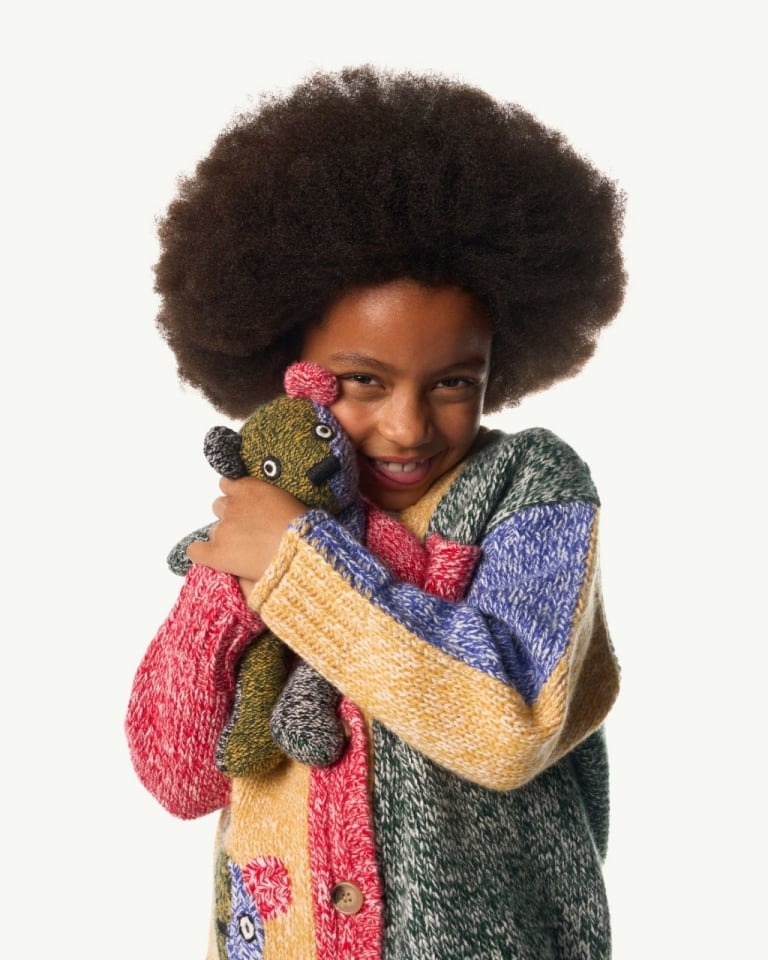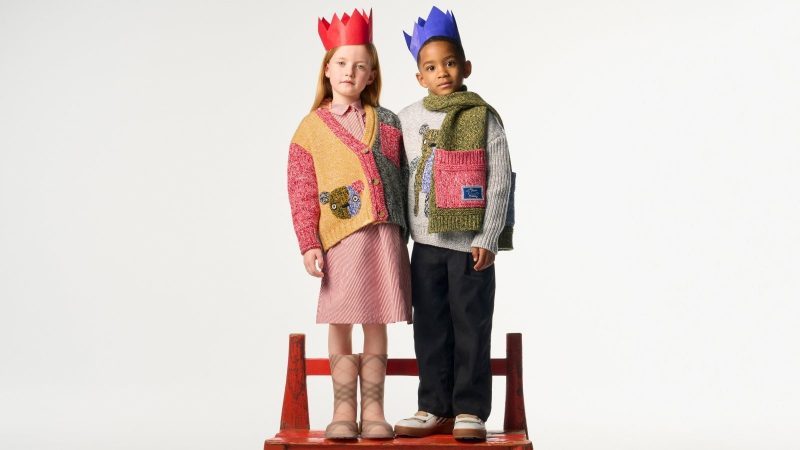The world of luxury fashion is often synonymous with exclusivity, innovation, and heritage. But when it comes to sustainability, the industry still finds itself under the spotlight. Enter Burberry, the quintessential British brand, with its Childrenswear Remake Capsule, a charming blend of nostalgia, playfulness, and purpose. Yet, behind the delightful miniatures lies a critical question: Is this a true step toward circularity or simply a curated nod to sustainability?
Miniature Masterpieces with a Heritage Twist
This winter, Burberry unveiled a collection of over 30 childrenswear pieces crafted from surplus fabrics and yarns—materials that once graced its celebrated mainline collections. From pint-sized trench coats to mouliné knits and checked kilts, the capsule is a delightful showcase of Burberry’s iconic designs in miniature form.
Adding a layer of storytelling, selected pieces feature a “multiple owners” label, encouraging these garments to be passed down—a charming touch that not only evokes family heirlooms but also aligns with modern ideals of conscious consumption.

Photo @Burberry Childrenswear Remake Capsule
Playful Motifs with Purpose
True to its playful essence, the capsule reinterprets classic Burberry motifs. The duck emblem, inspired by archival embroidery from 1992, finds new life on sweaters, socks, and baby gift sets. Meanwhile, the beloved Thomas Bear receives a patchwork makeover, reinforcing the collection’s circular ethos. It’s a subtle but effective reminder that even the most whimsical designs can carry a deeper purpose.
Circularity: Genuine Impact or Marketing Momentum?
Circularity is a word that’s gaining currency in luxury, but it’s often hard to decipher where the substance ends and the spectacle begins. Burberry’s commitment to transforming surplus fabrics into coveted pieces is a commendable step, but it’s worth asking: Is this capsule a scalable model for the brand’s wider collections or a one-off seasonal story?
The inclusion of the “multiple owners” label is a brilliant touch, but it also highlights the paradox of luxury. In an industry built on the promise of exclusivity, how do you reconcile the push for sustainable practices like garment sharing?

Photo @Burberry Childrenswear Remake Capsule
Beyond Nostalgia: What’s Next?
This isn’t Burberry’s first foray into sustainable fashion. From its ReBurberry Edit to its partnership with CottonConnect, the brand has made notable strides toward reducing its environmental impact. However, to lead in the space, Burberry—and the luxury sector as a whole—must extend these efforts beyond capsules and limited-edition drops.
Luxury consumers today demand more than beautiful storytelling; they want measurable impact. Can initiatives like the Remake Capsule set a precedent for how Burberry approaches all its collections? And will we see the circular ethos move from playful experiments to being woven into the brand’s DNA?
The Verdict
The Childrenswear Remake Capsule is a heartwarming and thoughtful nod to both Burberry’s storied past and its future ambitions. It skillfully blends nostalgia with modern sensibilities, offering a glimpse of what sustainable luxury could look like. Yet, it also serves as a reminder that the road to circularity is long, and gestures, however delightful, must be backed by systemic change.
For now, Burberry’s miniature masterpieces are a charming addition to the festive season—and a hopeful step toward crafting a more sustainable future. But as the luxury audience, we’ll be watching closely to see if this playful capsule is a prelude to something bigger or just another chapter in fashion’s evolving sustainability narrative.

